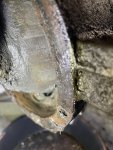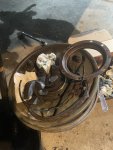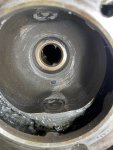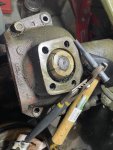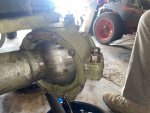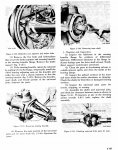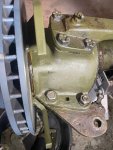Grease was coming out the sides of the knuckle on the inside side, where it looks like a sphere is at the end of the axle. There is a felt seal there and if its ever been serviced, its been decades. Watsons Wagons is messing with knuckles so Id thought Id give mine a go.
I found this helpful resource - Knuckle Rebuild (imageevent.com)
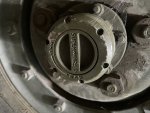
Superwinch lockout hubs - This can be taken apart, but not needed for this project. I cant find the gaskets anywhere in any case. They seem to work well so I am happy with them.

Getting the drum off
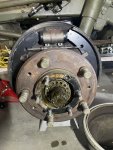

And the bearings
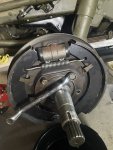
Removing the brake, have not done this previously and was surprised the bolts weren't frozen. Naturally Ill have to bleed the brakes after this

The knuckle housing

Keeping the position of the knuckle so I can mark it after I clean the grease off so I can put it back the way it was

Getting the arm out of the way
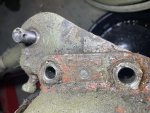
The part I am stuck on
There are dowels on both sides of this housing, but they dont want to move.

I am using a punch pin and hammer, but these things aren't budging. I am fairly certain that I have to get these apart to get to the felt seals, part of MM - Flange oil seal in the TM, the part that holds grease in on the spherical part. I have the retaining ring/flange oil seal off, but its stuck between the knuckle housing and axle currently. I can try, but replacing the seal spring and felt seal will be super awkward like it is, stuck between the housing and axle.
Any ideas for getting that dowel out, or other tips regarding the steering knuckle service?
I found this helpful resource - Knuckle Rebuild (imageevent.com)

Superwinch lockout hubs - This can be taken apart, but not needed for this project. I cant find the gaskets anywhere in any case. They seem to work well so I am happy with them.

Getting the drum off


And the bearings

Removing the brake, have not done this previously and was surprised the bolts weren't frozen. Naturally Ill have to bleed the brakes after this

The knuckle housing

Keeping the position of the knuckle so I can mark it after I clean the grease off so I can put it back the way it was

Getting the arm out of the way

The part I am stuck on
There are dowels on both sides of this housing, but they dont want to move.

I am using a punch pin and hammer, but these things aren't budging. I am fairly certain that I have to get these apart to get to the felt seals, part of MM - Flange oil seal in the TM, the part that holds grease in on the spherical part. I have the retaining ring/flange oil seal off, but its stuck between the knuckle housing and axle currently. I can try, but replacing the seal spring and felt seal will be super awkward like it is, stuck between the housing and axle.
Any ideas for getting that dowel out, or other tips regarding the steering knuckle service?


